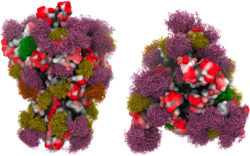On May 11, the federal government’s public health emergency declaration for the COVID-19 pandemic ended. The emergency declaration gave wide-ranging powers to the government to waive laws, provide funding and create regulations in a variety of areas. From housing and insurance to mask mandates to prescriptions and access to doctors and medical treatment, the declaration changed the fabric of our day-to-day life in a significant way. Now that it’s ending, the expiration of the declaration will, again, mean many changes in a variety of facets in daily life. So just what is changing, and which changes in policy will remain? The list is extensive and detailed, but (at least in principle) many of these changes will happen gradually.
One of the most significant changes will be the availability of data and reporting requirements from hospitals. While this may not come as a surprise to folks in Georgia, as the state has consistently been providing less and less data in the last year, the change in access to data is still significant. According to the Georgia Department of Public Health, weekly COVID-19 status updates (formerly daily) will soon become monthly status updates, a change that will likely occur in July.
What other impacts does the ending of the declaration have? Jayne Morgan, director of the Piedmont Healthcare System’s COVID-19 Task Force, helped answer those questions:
Flagpole: Are free testing and vaccine access still available?
Jayne Morgan: Yes. COVID vaccines will remain free until the current stockpile is depleted. This is independent of whether someone is insured or not, and independent of the type of insurance a person may have. After the current stores of COVID vaccines run out, some may face co-pays, or no cost at all as other federally funded programs kick in. Additionally, through December 2024, all vaccines and testing will remain free secondary to a ‘bridge’ program instituted by the Department of Health and Human Services [HHS] that will carry us into the transition of these therapeutics into the open market.
FP: What else does it change? Will access to telehealth and prescriptions change?
JM: Telehealth access and flexibilities will also continue under the Consolidated Appropriations Act 2023 [i.e. the bridge program via HHS] through Dec. 31, as well as access to Paxlovid and other therapeutics still effective against the current variants circulating. What does change is the CDC’s authority to require reporting mechanisms of every state. Therefore, the data regarding incidence, prevalence and community transmission ends. We now will monitor hospitalizations.
FP: While it’s the end of the public health emergency declaration, does COVID still present a threat to anyone?
JM: COVID does remain an ever-present threat in this endemic state and, to be clear, the hospitalization numbers are not zero. COVID is still here, and some people are still sick enough to require hospitalization.
FP: What is your advice for people now?
JM: Be certain to get immunized if you have not done so. Get boosted if you are more than three months out since your immunization. This is especially important if you have had an organ transplant of any kind, are on immunosuppressive agents, have cancer and/or are on chemotherapy, have asthma or chronic heart disease, are over the age of 60, a child or suffer any other physical or health related challenges.
FP: With the end of the declaration, many folks are speaking out about the need to be more prepared in the event that another pandemic should arise. What are your thoughts on this? What lessons have we learned, and what do we need to do to be better prepared in the future?
JM: The risk of another variant [or even another viral threat] does not end, genomic surveillance by the CDC continues, and hospitalized patients with COVID are still a concern.
Clinical trials ramped up to include populations of color for the first time during the COVID pandemic. This singular act of inclusion began the process of narrowing the health equity gap by providing increasing touch points with the medical systems and establishments, and providing a bridge to relationships between a hesitant minority population and the health care system. Hopefully, this effort will continue as we transition into an endemic state of less urgency.
Further, we remain unprepared for the next pandemic, and need to modernize our digital preparedness, focus on expert medical communications geared for public consumption and engender public trust.
Clarke County COVID Data
7-Day Moving Average of New Cases, as of June 7: 0.4
Hospital Admissions May 28–June 3: 2
Total Confirmed Cases: 31,193
Total Confirmed Deaths: 252
Last Confirmed Death: May 18
Sources: Georgia Department of Public Health, Centers for Disease Control and Prevention
Like what you just read? Support Flagpole by making a donation today. Every dollar you give helps fund our ongoing mission to provide Athens with quality, independent journalism.









